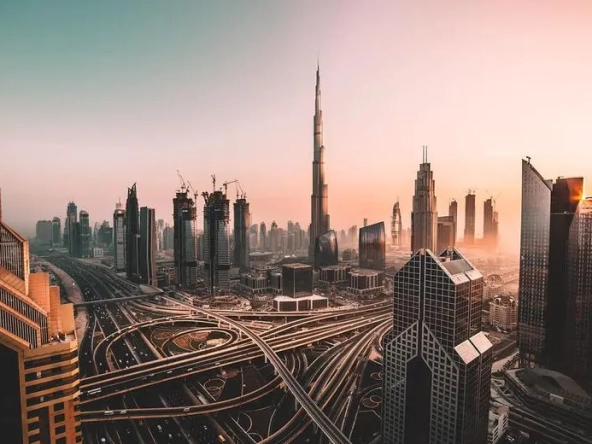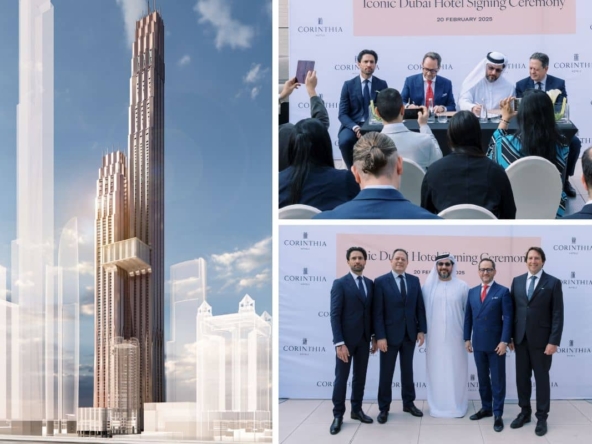Dubai’s Real Estate Market Embraces Longevity-Focused Living
Dubai’s real estate landscape continues to offer unparalleled luxury, from opulent penthouses in record-breaking skyscrapers to multi-million-dollar waterfront estates and lavish mansions on man-made islands.
As the city’s property sector thrives, many wonder what lies ahead. Experts point to a new trend shaping the market—longevity-driven communities. These residential ecosystems, integrated with AI technology, are designed to promote well-being at every stage of life.
The Rise of Longevity-Focused Communities
The UAE is undergoing a significant transformation in urban planning, shifting beyond traditional mixed-use developments to communities that support extended lifespans. According to industry leaders, this change is in response to projections from the Dubai Health Authority, which anticipates a 29% increase in the population aged 60 and above by 2050.
“Urban environments are evolving worldwide. In cities like Dubai and Abu Dhabi, residences, workplaces, and recreational spaces are gradually transforming into longevity ecosystems that nurture well-being throughout life,” said Dmitry Kaminskiy, General Partner at Deep Knowledge Group. “The future envisions urban settings that actively enhance physical, mental, and cognitive health, contributing to longer and healthier lives.”
This transition reflects a broader societal shift in prioritizing well-being.
“In recent years, we’ve witnessed a major global re-evaluation of health and wellness, with people adopting a proactive approach to longevity,” said KASCO Developments CEO, Issa Abdul Rahman.
He emphasized that this shift has sparked demand for real estate developments that support a longevity-focused lifestyle, allowing buyers and tenants to live in communities designed to promote long-term health.
Major cities worldwide, such as Singapore, Tokyo, and Miami, have already embraced this concept, moving beyond conventional mixed-use projects to health-centric urban spaces. Now, Dubai is the latest city to follow suit.
Kaminskiy further noted that AI advancements, biotechnology, and preventive healthcare are merging to create environments that do more than provide living spaces—they actively sustain human well-being.
The momentum behind this trend gained traction after the COVID-19 pandemic, which significantly reshaped global perspectives on health and urban living.
“The pandemic caused a fundamental shift in how people view their well-being. It heightened awareness of how the built environment influences health and encouraged individuals to take a more proactive approach,” said Wissam Breidy, CEO of HRE Developments.
AI & Technology: The Driving Forces of Future Living
The integration of artificial intelligence is a central pillar in this evolution, revolutionizing how communities are designed and managed.
From AI-driven urban planning to personalized health monitoring, these smart communities are leveraging technology to enhance everyday life.
“Very soon, AI-powered data analytics and predictive modeling will extend beyond industrial applications,” explained Kaminskiy. “Urban planning will incorporate AI-driven insights to anticipate residents’ needs, minimize environmental stressors, and optimize conditions for longevity.”
For instance, traffic management systems will dynamically adjust to reduce pollution and noise levels, while air quality sensors will trigger real-time interventions to mitigate respiratory risks.
Moreover, the concept of smart homes is evolving to become active participants in health management.
“We are moving toward a future where residences will not be passive structures but dynamic environments that contribute to well-being,” Kaminskiy stated. “Homes will be equipped with biosensors to monitor vital signs, sleep patterns, and metabolic health. AI-powered assistants will provide real-time recommendations on nutrition, hydration, and physical activity, while emergency response systems will automatically detect anomalies and deploy medical assistance when needed.”
This level of technological integration will redefine healthcare, shifting the focus from reactive treatment to proactive wellness management.
“As AI adoption increases, hospitals may evolve from treatment centers to advisory hubs, guiding residents on personalized longevity strategies rather than merely addressing illnesses,” Kaminskiy suggested.
However, industry leaders emphasize that while AI plays a crucial role, human expertise remains irreplaceable in urban planning.
“Technology is a valuable tool, but real urban solutions require human insight,” noted Abdul Rahman. “AI can support professionals by identifying problem areas and suggesting solutions, but it’s people who ultimately shape livable communities.”
Shifting Buyer Preferences
The demand for longevity-focused communities spans across different demographics, from retirees seeking a serene lifestyle to young families desiring a health-conscious environment for their children.
“Affluent buyers and health-conscious individuals are particularly drawn to wellness-oriented developments,” Breidy explained. “Many expatriates are also showing strong interest, as these communities foster a sense of belonging and holistic well-being.”
Experts highlight that buyers are willing to pay a premium for properties in longevity-driven developments, recognizing their long-term value.
“The primary demographic consists of individuals who can afford a premium lifestyle and prioritize health,” Abdul Rahman added. “From younger families to older adults, people are looking to secure their place in these sought-after communities.”
Investors are also taking notice, seeing high rental returns and strong market potential in wellness-focused developments.
“Buyers recognize the exceptional value of these curated living spaces and are willing to invest significantly,” Breidy noted.
Amenities & Design: Prioritizing Well-Being
Longevity communities are designed with features that enhance both physical and mental well-being.
According to Kaminskiy, green spaces play a crucial role in supporting cognitive function and reducing stress.
“Access to nature is essential for longevity. Studies highlight the profound benefits of greenery, from boosting immune resilience to improving mental clarity. We will see vertical forests, rooftop gardens, and AI-maintained urban farms replacing conventional concrete landscapes,” he said.
Additionally, pedestrian-friendly neighborhoods will replace vehicle-dominated areas, encouraging an active lifestyle and promoting healthier mobility.
Government support and policy frameworks are also key to fostering this transition.
“The role of governance is critical in shaping longevity cities,” Kaminskiy explained. “Regulatory policies must adapt to incentivize developers to integrate health-first urban designs rather than treating wellness features as optional add-ons.”
This shift presents significant economic opportunities for both developers and investors.
“The evolution of UAE’s real estate market reflects a deeper transformation in how people perceive urban living and well-being,” Breidy said.
A Paradigm Shift in Real Estate
Experts predict that homebuyers’ priorities are shifting away from traditional luxuries like private pools or large living rooms. Instead, they are seeking residences with features that actively contribute to their long-term health.
“For centuries, cities have remained largely the same—clusters of buildings that serve as residential and commercial spaces,” Kaminskiy observed. “Now, urban design is entering a new phase, one that fundamentally redefines how we live.”
The financial incentives for developers are already evident.
“Almost every week, new projects are being launched, promising premium amenities centered around holistic wellness,” Abdul Rahman remarked. “This trend will continue to gain traction as buyers and investors look beyond surface-level luxuries and appreciate the thoughtfulness behind these developments.”
Kaminskiy envisions cities as dynamic, living ecosystems engineered to support human longevity.
“Health is the new wealth, and savvy buyers are prioritizing well-being when investing in real estate,” he concluded. “The future of real estate will transcend location—it will be about creating smart, sustainable environments that enhance longevity, quality of life, and overall wellness.”



